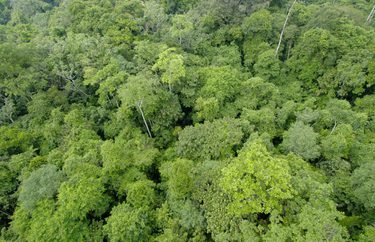
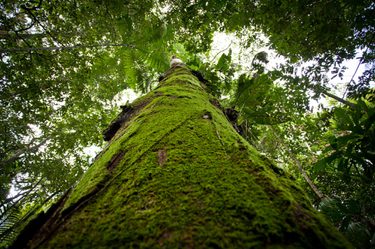
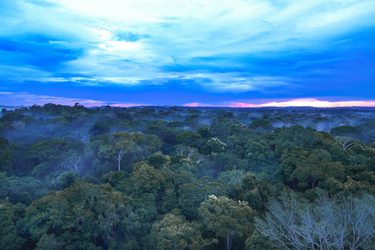
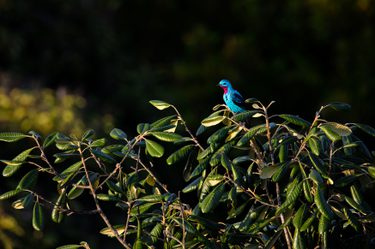
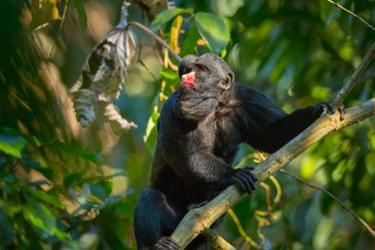
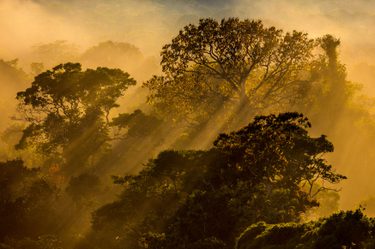
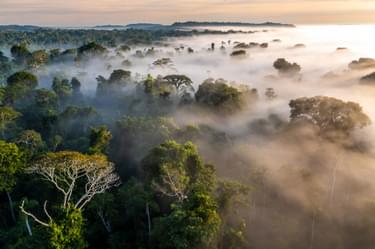









Also known as tropical submontane rainforest, the canopy is always green, with beautiful and lush foliage, although some trees lose their leaves for a few weeks at different times of the year. At ground level, the forest is more open, because the tree trunks are more separated from one another. Epiphytes such as bromeliads and philodendrons are common. The soil is generally clay, with color ranging from dark orange to gray, and is covered by a thick layer of foliage that is deposited and decomposes to form rich humus. Consequently, most of the nutrients are located close to the surface and the trees have thick shallow roots. Many trees rely on each other for support and are enclosed in a dense cloak of intertwining vines that further help to sustain the vegetation. This is the most common type of vegetation within the Cristalino reserve.
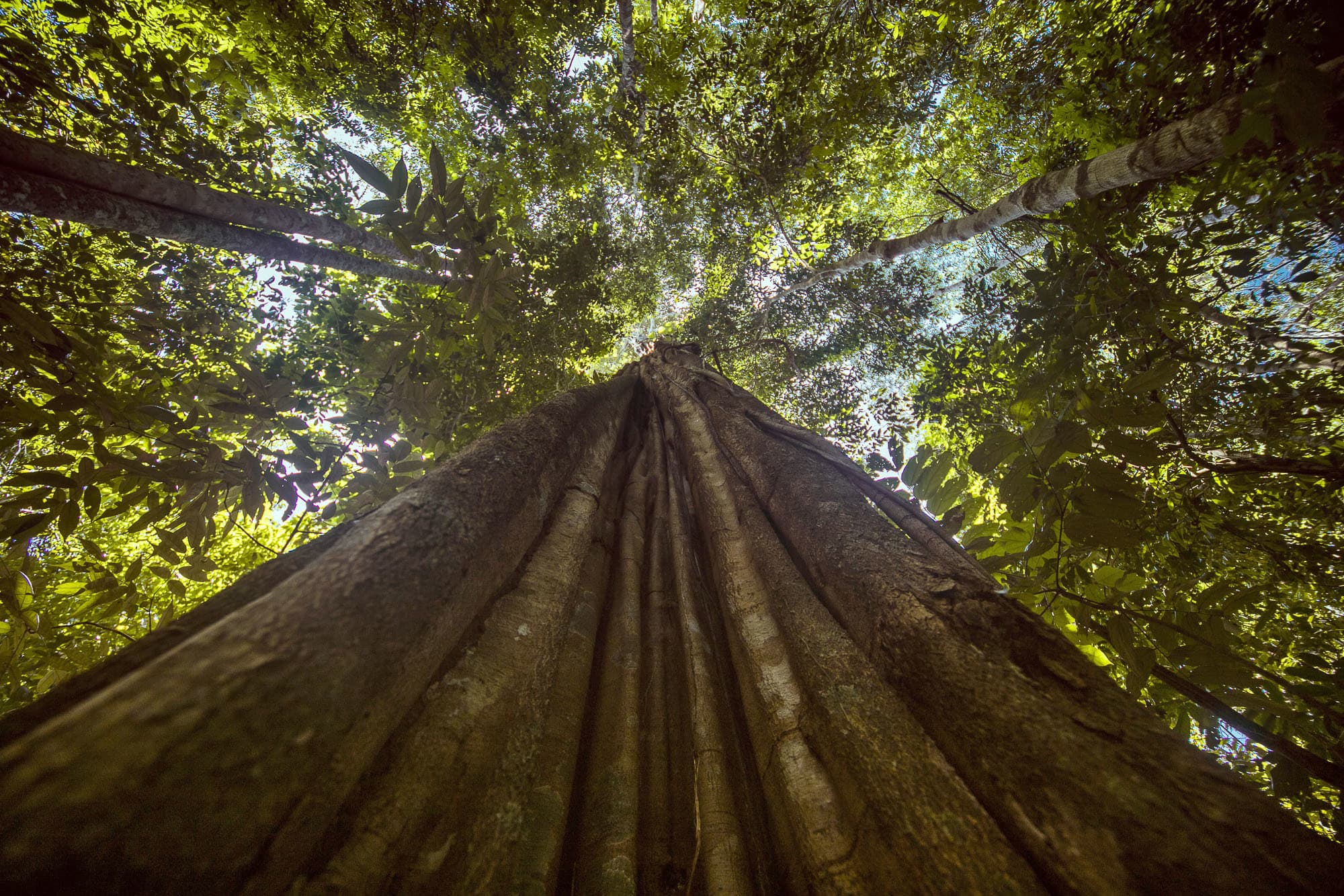
Guarantã, a feature of the Terra firma forest.
The most important family of canopy trees is the Burseraceae, with predominance of Haiawaballi (Tetragastris altissima), along with trees of the Protium genus (Protium crenatum, Protium sagotianum, Protium spruceanum and Protium tenuifolium). Others that stand out are the Moraceae family, including trees of the Brosimum genus (Brosimum guianense, Brosimum lactescens and Brosimum rubescens), many of whose species yield a milky sap; and the Meliaceae family, especially trees of the Guarea genus (Guarea kunthiana, Guarea purusana, Guarea sylvatica) and Cancharana species (Cabralea canjerana).
Notables among the Leguminosae family include guamas of the Inga genus (Inga capitata, Inga edulis and Inga marginata) and the soapwood (Abarema jupunba), Coral tree (Erythrina dominguezii) and Tachi (Tachigali cf. myrmecophila).
Emergent species frequently belong to the Lecythidaceae family: Brazil-nut (Bertholletia excelsa), Pipe-bowl (Couratari macrosperma) and Jequitiba (Cariniana estrellensis).
The Arecaceae family shows relatively little diversity in the area, being represented mainly by the Copa-palm (Iriartea deltoidea), Curly-stilt Root Palm (Socratea exorrhiza), Maripa Palm (Attalea maripa) and a relative of the Açaí Palm (Euterpe longibracteata).
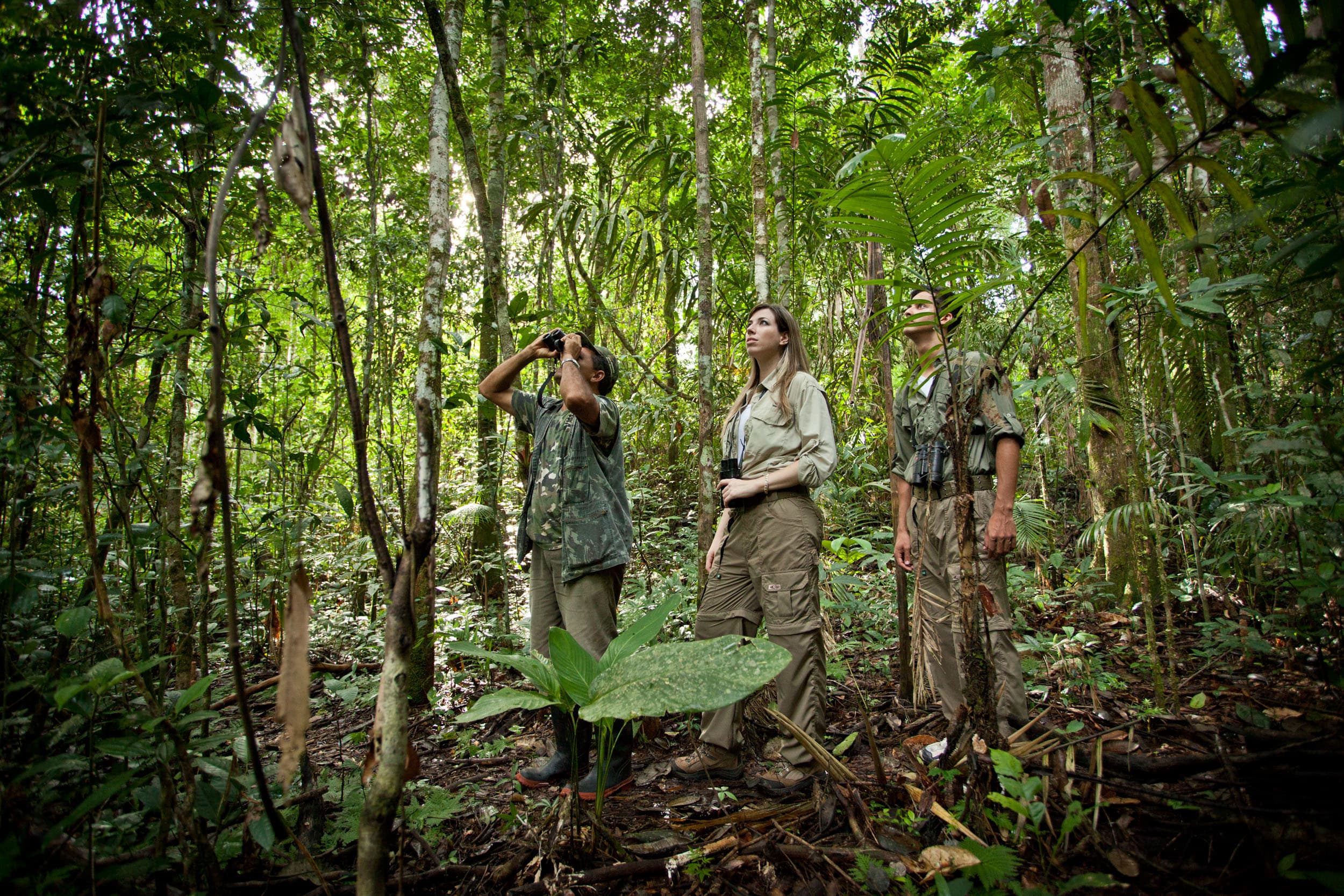
Walking amongst the Terra firma vegetation, noting the understorey foliage of the Heliconias.
The density of the understorey is variable. Young individual specimens of the canopy trees are common, along with smaller trees and shrubs representing a variety of different families, notably Jaborandi pepper plants of the Piperaceae family.
The density of the herbaceous plants is similarly variable, the most common families being the Acanthaceae: Ruellia (Ruellia puri); Costaceae: Spiral Ginger (Costus scaber); Heliconiaceae: Heliconias (Heliconia densiflora, Heliconia marginata and Heliconia psittacorum) and Marantaceae: Calathea (Calathea altissima). Among the epiphytes, the most common families are the Araceae: a variant of the Swiss-cheese plant (Monstera obliqua) and Philodendrons (Philodendron distantilobium and Philodendron linnaei); Bromeliaceae: Pineapple variants and Bromeliads such as the Scarlet-star (Guzmania lingulata); and Orchidaceae: Orchids, such as the star-like Scaphyglottis (Scaphyglottis stellata).
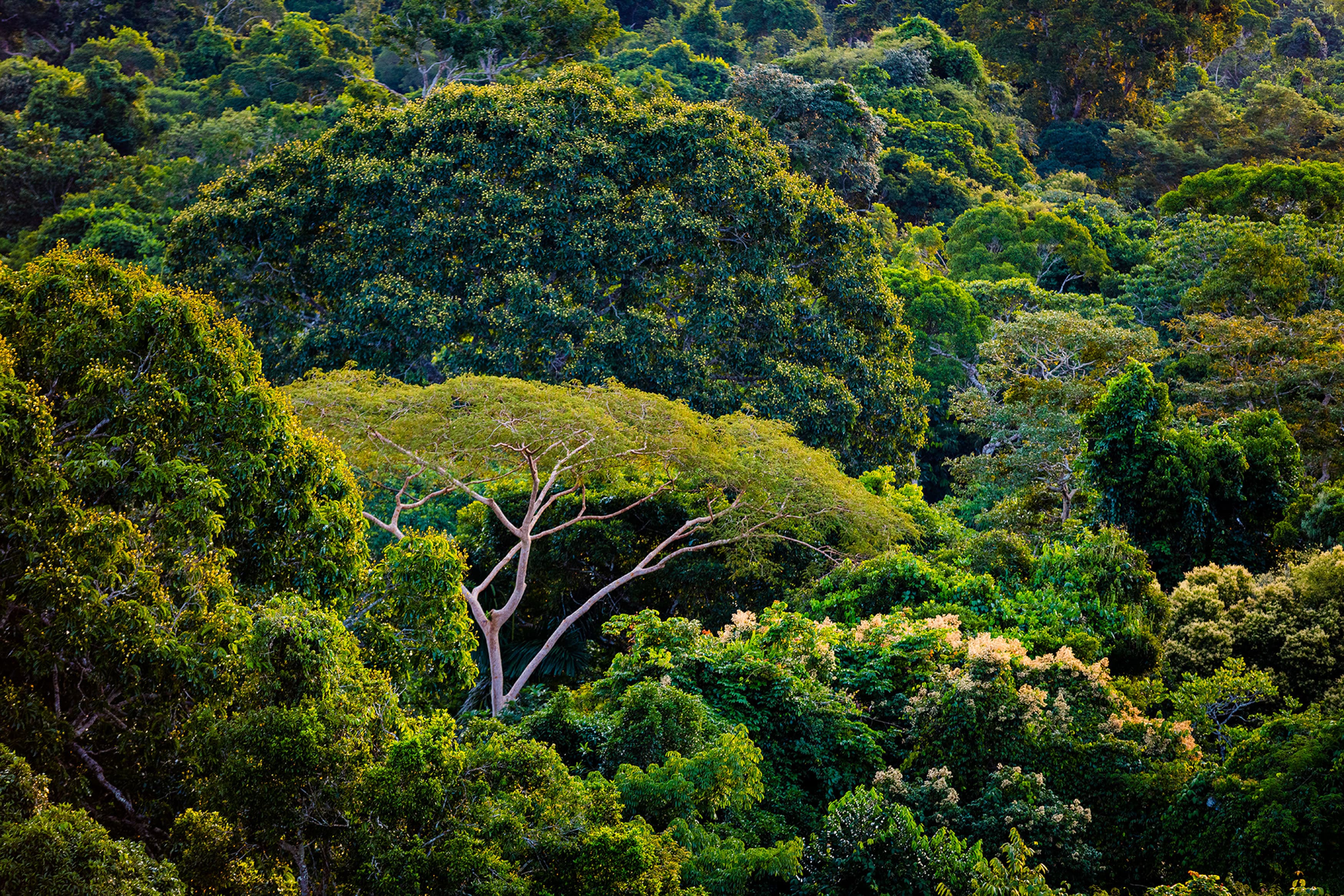
View of the Terra firma forest.
